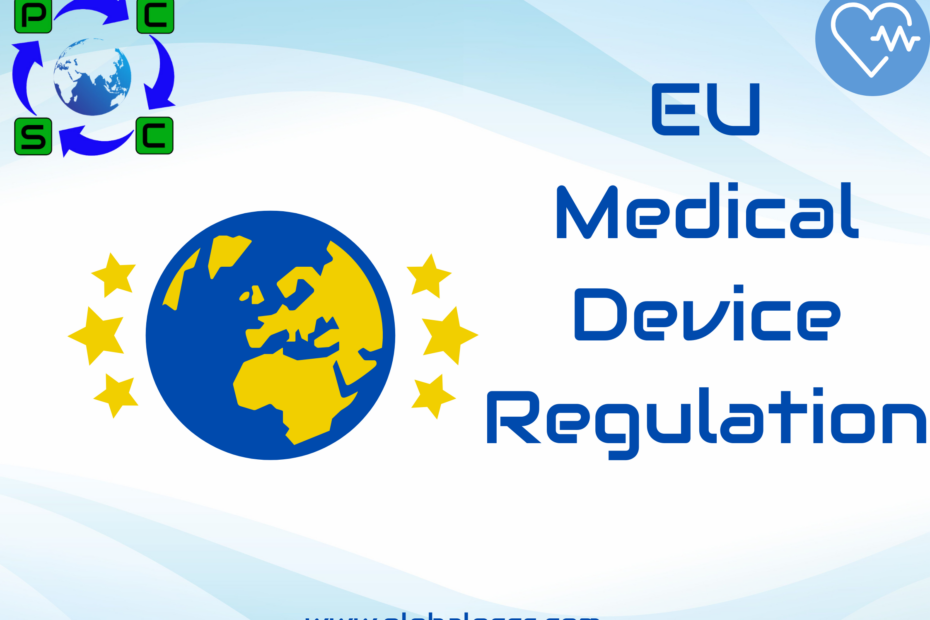Scope
The European Union (EU) updated the legislation that governs medical devices and in vitro fertilization diagnostics to bring them into alignment with the advancements that have taken place in the sector over the course of the previous 20 years. Keeping a high degree of safety while encouraging innovation was the top objective, along with ensuring a rigorous, transparent, and sustainable regulatory structure. In the month of May 2017, two new rules pertaining to medical devices and in vitro diagnostic medical devices came into effect.
The following new legislation is applicable within the EU
● 26 May 2021: Regulation (EU) 2017/745 on medical devices – EU MDR
● 26 May 2022: Regulation (EU) 2017/746 on in vitro diagnostic medical devices – EU IVDR
Both Regulation 2027/745 and Regulation 2017/746 provide for transition periods during which devices that are compliant with earlier Directives can still be placed on the market in the EU. These transition periods are set to take place between the two regulations.
In Vitro Diagnostic Devices (EU IVDR)
The In Vitro Diagnostic Devices Regulation (Regulation (EU) 2017/746) introduces a new classification system for companion diagnostics and the obligation to undergo a conformity assessment by a notified body.
The Regulation applies from 26 May 2022, following a five-year transition period.
Medical Device Regulation activities
1. Regulatory Compliance : – Only medical devices that satisfy the general safety and performance requirements outlined in Annex I are allowed to be sold (or put into service).
These requirements can be found in the Annex I document. A clinical examination (Annex XIV), conformity assessment procedure (Annexes IX, X, and XI), technical documentation
(Annex II), EU Declaration of conformity (Article 19), and CE-marking (Article 20) are the methods that are used to demonstrate compliance with the regulations.
Section 10.4.1. Design and manufacture of devices
The European Union Medical Device Regulation (EU MDR), specifically Section 10.4.1, is a vital element in assuring the quality and safety of medical devices.
The devices must be developed and manufactured in such a way that the dangers caused by substances or particles, such as wear debris, degradation products, and processing residues, that may be emitted from the device are minimised to the greatest extent practicable during the design and manufacturing processes.
As per 10.4.1 medical device shall only contain following substances in a concentration that is
above 0,1 % weight by weight (w/w) if Section 10.4.2 says it’s okay : –
a. substances which are carcinogenic, mutagenic or toxic to reproduction (‘CMR’), of category 1A or 1B, in accordance with Part 3 of Annex VI to Regulation (EC) No 1272/2008 of the European Parliament and of the Council (1), or
b. substances having endocrine-disrupting properties
10.4.2. Justification regarding the presence of CMR and/or endocrine-disrupting properties substances
a. An estimate of patient or user exposure;
b. An investigation of prospective alternative substances, materials, or designs, including independent research, peer-reviewed studies, scientific opinions from relevant scientific
committees, and availability;
c. Intended use of such devices includes treatment of children, pregnant or breastfeeding women, or other patient groups considered particularly vulnerable to such substances.
d. Sections 10.4.3 and 10.4.4 require the latest appropriate scientific committee guidelines
Obligations of manufacturers and other economic operators
Manufacturers must justify the presence of hazardous substances in invasive medical devices above a specific threshold to notified bodies.
The necessity for a Notified Body is another critical part of EU MDR compliance. Notified Bodies are independent organisations appointed by EU member states to assess medical device compliance. To establish compliance with the regulation, manufacturers must get a valid certificate from a Notified Body. The certification procedure entails a thorough analysis of the Technical Documentation, Quality Management System, and, in some situations, clinical proof.
Medical Devices Regulation – Hazardous Substances
This list contains hazardous substances in accordance with the Medical Devices Directives (MDD) design and construction requirements.
Similarly EU MDR & EU IVDR imposes restrictions on the use of substances under the REACH SVHC & CLP regulations.
Manufacturers are required to provide information to downstream users and consumers if an SVHC has a weight-by-weight concentration of more than 0.1%, and this information must include safe handling instructions and potential dangers connected with the substance.
In addition, the CLP legislation offers standardised guidelines for the classification, labelling, and packaging of chemical substances. In order to demonstrate compliance with the CLP standards, producers of medical devices need to appropriately categorise any hazardous compounds that may be present in their products and provide downstream users with the relevant labels and safety data sheets.
Conclusion
It is absolutely necessary for companies who manufacture medical devices in the European Union to be in compliance with the EU MDR & EU IVDR. These rules safeguard the safety of patients, bring about a convergence of standards, and encourage the greatest possible level of quality and performance in medical equipment. Under REACH and CLP, manufacturers are obligated to strictly abide by the compliance criteria, which include the categorization, the submission of Technical Documentation, participation with Notified Bodies, and limitations on chemicals. If manufacturers follow these steps, they will be able to navigate the regulatory framework, acquire access to the market, and contribute to the advancement of healthcare in the EU.
Manufacturers may seek help from industry experts, consultants, or regulatory affairs specialists who specialise in EU MDR & EU IVDR compliance in order to navigate the complicated landscape of medical device laws in the EU. These individuals are able to assist manufacturers in complying
with EU MDR.
Make sure that the route towards compliance with your medical equipment is as easy and successful as possible by scheduling free consulting with Global PCCS expert team and we are always ready to help you to make sure your products are complying to the respective regulations globally.
Kindly contact us: https://globalbusinesscard.app/Global-PCCS-India








 Authorised IMDS & CDX Training & Consulting partner for
Authorised IMDS & CDX Training & Consulting partner for







